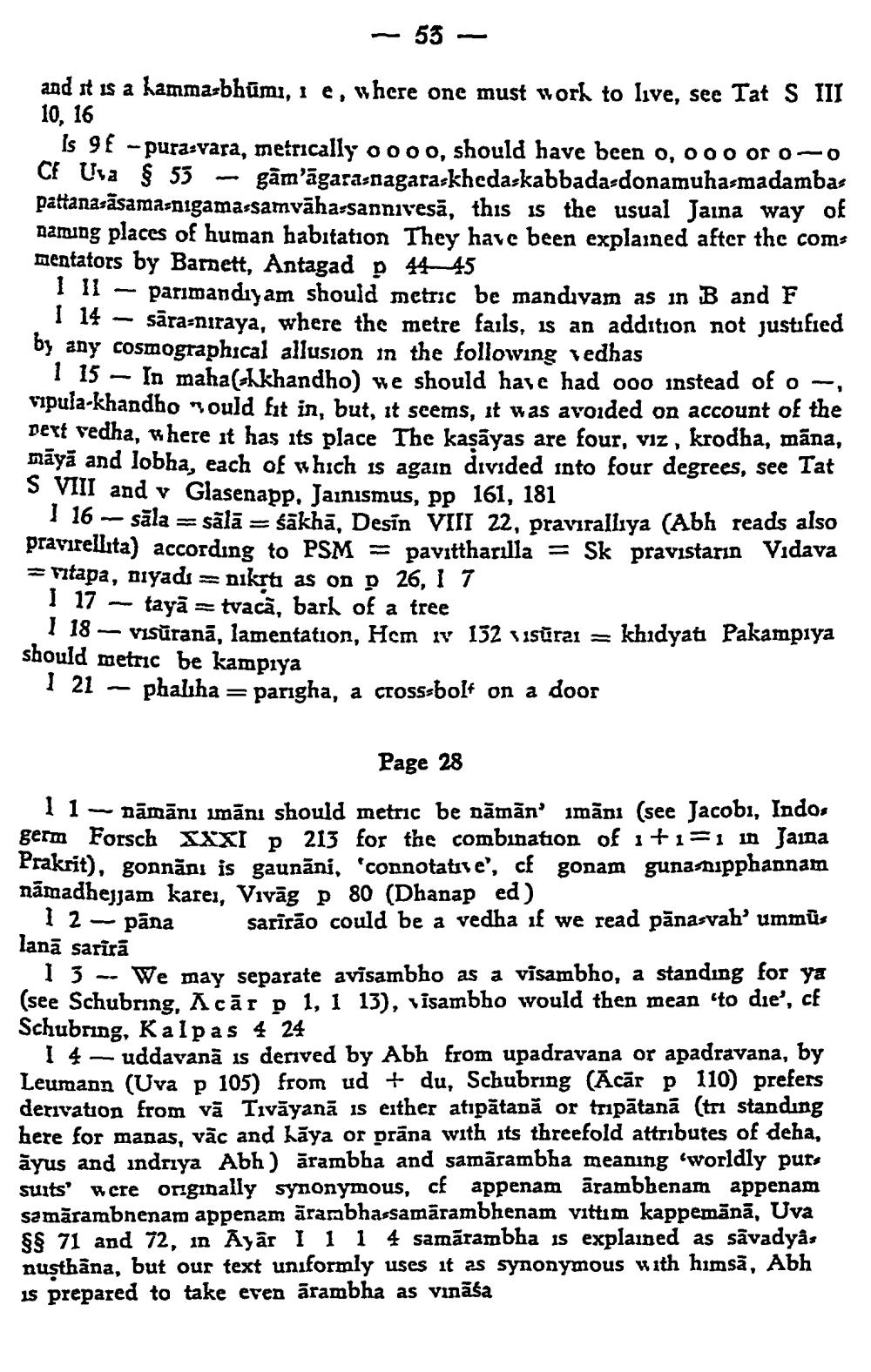________________
- 53
and it is a hammasbhūmi, i e, where one must work to live, see Tat S III 10, 16
is 9€ - pura-vara, metrically 0000, should have been o, 000 or 0-0 CF Uva § 53 - gām'āgara-nagaraskheda-kabbada-donamuha-madambas pattanasāsama-nigamassamvāha-sannivesā, this is the usual Jaina way of naming places of human habitation They have been explained after the coms mentators by Barnett, Antagad p 4445
I ll - parimandıyam should metric be mandivam as in B and F
I 14 — sāra-nıraya, where the metre fails, is an addition not justified by any cosmographical allusion in the following vedhas
I 15 – In maha(shkhandho) we should have had ooo instead of o-, vipula-khandho "ould fit in, but, it seems, it was avoided on account of the Dext vedha, where it has its place The kaşāyas are four, viz , krodha, māna, māyā and lobha, each of which is again divided into four degrees, see Tat S VIII and v Glasenapp. Jainismus, pp 161, 181
I 16 sāla = sālā = śākhā, Desin VIII 22, pravirallıya (Abh reads also prayirellita) according to PSM = pavittharilla = Sk pravistarın Vidava = titapa, miyadi =nikrti as on o 26, I T
| 17 tayā = tvaca, bark of a tree
| 18 - Visūranā, lamentation, Hom i 132 sisūrai = khidyatı Pakampıya should metric be kampiya
I 21 – phalıha = parigha, a cross-bolt on a door
Page 28
11- Dāmānı imānı should metric be dāmān' imāni (see Jacobi, Indos germ Forsch XXXI p 213 for the combination of iti=i in Jaina Prakrit), gonnani is gaunāni, 'connotatise', of gonam gunasnipphannam nāmadhejjam kares, Vivāg p 80 (Dhanap ed)
12 - pāna sarīrão could be a vedha if we read pānasvah' ummus lanā sarira
1 3 -- We may separate avisambho as a visambho, a standing for ya (see Schubring, Ācār p 1, 1 13), visambho would then mean 'to die', cf Schubring, Kalpas 4 24
14 – uddavanā is derived by Abh from upadravana or apadravana, by Leumann (Uva p 105) from ud + du, Schubring (Acār p 110) prefers derivation from vā Tivāyanā is either atıpātană or tripātană (tri standing here for manas, vāc and hāya or prāna with its threefold attrib: āyus and indriya Abh) ārambha and samārambha meaning 'worldly purs suits' were originally synonymous, cf appenam ārambbenam appenam samārambnenam appenam ārambhassamārambhenam vittım kappemānā, Uva $$ 71 and 72, in Ayar I 1 1 4 samārambha is explained as sãvadyas nuşthāna, but our text uniformly uses it as synonymous with himsā, Abh is prepared to take even ārambha as vināša




